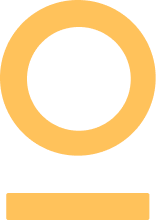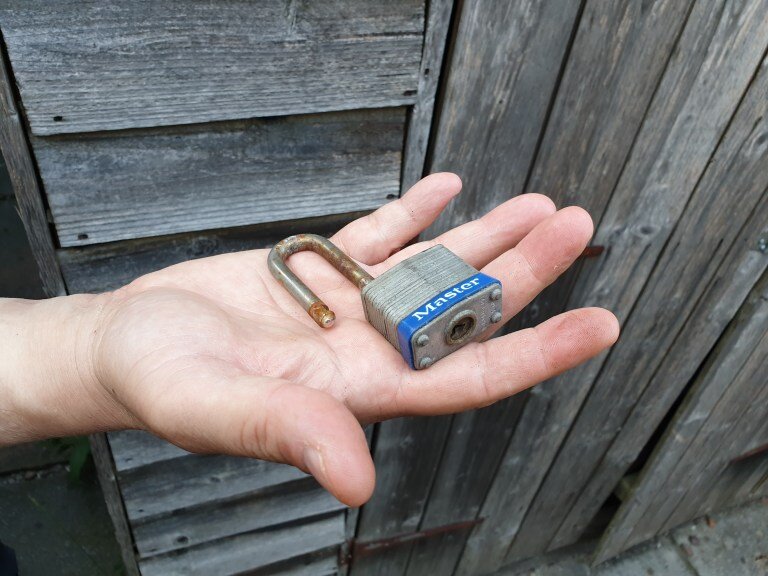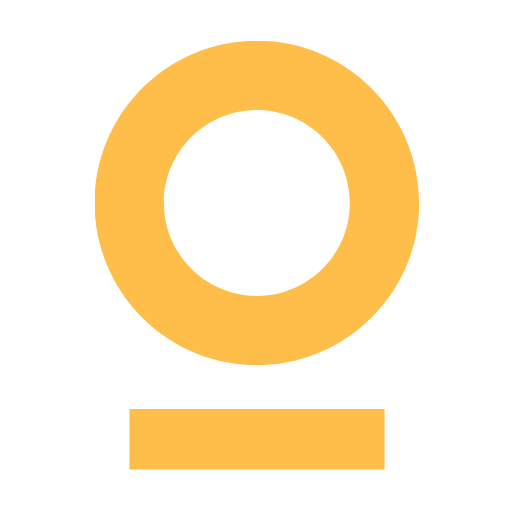I’m not Black on Monday, a woman on Tuesday, and left-handed on Wednesday.
Annie Jean-Baptiste, Head of Product Inclusion at Google
My journey into ethical and inclusive design was prompted by embarrassment, fear, and impatience.
Embarrassment:
When in December 2018, six months after launching my website on diversity and inclusion in tech, an expert in disability asked me if it was accessible. They pointed me to the post 10 ways to make your blog accessible for people with a visual impairment on the site Life of A Blind Girl . Reading the article was transformative. It made clear to me that, irrespective of my intention — promoting diversity and inclusion — my impact was the opposite. I’d been potentially frustrating and excluding from my website the millions of people with visual impairments that use screen readers. All by not using simple and low-effort practices such as adding alternative text to the imagines.
⇨Lesson learnt: Intent is not equal to impact.
Fear:
When in February 2019 the doctors kept me overnight in the hospital. They wanted to monitor my evolution following a fall during a team-building event at work. I was unable to sleep whilst waiting for the results in the morning and spent that night ruminating about how (or rather if) I would be able to go back to my job should the accident cause me to lose my sight, hearing, or speech. I mentally reviewed the tools I used for my work. The appalling result of my on-the-fly assessment was that I was pretty sure I wouldn’t be able to return to my position as head of scientific support and operations. Gratefully, the medical results indicated that there was no permanent damage, but that night of unrest didn’t go away.
⇨Lesson learnt: If you fail to prepare you are preparing to fail.
Impatience:
When I see that year after year we keep considering diversity and inclusion as an afterthought at the workplace. A marketing exercise to show customers and employees how much we have progressed since Henry Ford’s introduction of the five-day 40-hour workweek in 1926. However, let’s be honest: What’s the probability that we deliver products and services that are inclusive, when the same group of the population keeps calling the shots over and over?
⇨Lesson Learn: Keep iterating on the message.
So a year ago the Ethics and Inclusion Framework© (EIF) was born! A free assessment I developed to guide the process of identifying, preventing, mitigating, and accounting for the actual and potential adverse impacts of the products and services we create. The assessment is done via a questionnaire that incorporates the perspectives of users; unintended users, and non-users. All of whom may be indirectly impacted. The degree of inclusion of all those affected is evaluated against their diversity in terms of personal characteristics, accessibility, and access to technology. The likelihood of adverse outcomes is also assessed.
The EIF is targeted to those who want to create more ethical and inclusive products and services, and are looking for guidance on where to start or how to proceed systematically [source]. It was the natural complement in the area of products and services to my work towards furthering inclusive workplaces.
A success so far… or not?
Have you ever received amazing positive feedback on a project and still have the nagging feeling that something is not quite right. That you — or your audience — are missing the mark?
This is exactly the feeling I have now after an intense month where I hosted two webinars on how to make products and services more ethical and inclusive. The first one was part of the ongoing Women In Technology World Series Webinars on May 27th. The second at the virtual 1SOCIETY Festival on June 11th.
The feedback received so far has been fantastic.
You are doing a lot of great things. We need people like you to keep up the momentum!
I really enjoyed the webinar yesterday. You did an excellent job of not getting bogged down in the definitions of ‘ethical’, which is a place I’ve seen many people flounder over the years.
Patricia is very knowledgeable and was able to facilitate deep reflection moments with the audience in a non-threatening way. She inspired and motivated us to take small and bold steps to embark ourselves in the inclusive product design journey.
They match the positive feedback I received at the workshop I facilitated on ethical and inclusive design using the EIF at the 2019 Ada’s List Conference.
If that was not enough to pat myself on the back, last April Purdue University contacted me to participate in their NSF-funded studies investigating ethical awareness and action in a range of technology-focused disciplines [source]. They had identified the EIF as a contribution to ethically-centered design practice.
Then, why am I not satisfied?
No measure of how intention is followed by impact. I haven’t met a person that tells me it’s a waste of time to make their products inclusive or that we should aim for unethical services. Most people support and want to do the “right thing”. But how does that translate into action? For example, I consistently receive feedback that the EIF helps to increase awareness about these important topics. “The session was very insightful” and that it also elicits guilt (“your presentation reminded me my website is a mess”). But does it result into action?
The presumption of incompetence. In her essay Dying to Be
Competent, professor Tressie McMillan Cottom details how, in spite of all her professional and personal achievements, the health system rendered her an incompetent subject regarding the existence of her pain during her pregnancy. This led to its underdiagnosis, the refusal to alleviate it, and finally the loss of her baby daughter. I find that the concept of presumption of incompetence translates well into the domain of ethical and inclusive design. As we confine it — or relinquish it — to experts with formal qualifications in Human Resources, Design, Data Science, or Ethics. The scale of this problem affects all the population. Multidisciplinary approaches and experiences are necessary to (a) map the challenges, (b) design the interventions, and (c) implement the policies, process, and tools that mitigate the risks of excluding and increasing the vulnerability of users and their environment.
What keeps me going
First, the positive feedback about my presentation and facilitation skills. What’s not to like about getting praise for being an engaging speaker?
Second, all the scientific research demonstrating without a doubt that when we fail to embed ethics and inclusion in products and services we are proactively excluding and potentially harming other human beings. For example, a 2019 report from the National Institute of Standards and Technology (NIST) tested 189 face recognition algorithms created by 99 developers on 18+ million photos corresponding to mug shots, visa applications, and border-crossing US databases [source]. Some highlights were
- Those systems falsely identified African-American faces 10 to 100 times more than Caucasian faces
- They performed worst for women than for men
- Older adults were falsely identified up to 10 times more than middle-aged adults
Third, meeting and hearing from other women trailblazers in this area reassures me that this is a good fight. Three names come to mind right away, Annie Jean-Baptiste (Head of Product Inclusion at Google), Jasmine Orange (UX Designer at EY), and Melanie Denyer (Digital Consultant). What do they have in common? They advocate for change and show us how is done. They also very vocal about the importance of bringing intersectionality to the forefront of design. All of them have personal experience as users encountering additional roadblocks because of the compounded effect of simultaneously belonging to other minority groups.
Interested in learning more? Watch Jasmine’s talk on Designing For The Ten Percent: How To Unbias Your Designs and Melanie’s contribution to this panel discussion on Data and Accessibility.
On Changemakers, allies, and advocates
Dr. Erica Chenoweth, professor in Human Rights and International Affairs at Harvard Kennedy School, analysed hundreds of political campaigns from 1900 to 2006 worldwide and found that nonviolent campaigns where twice as likely to succeed compared to violent protests, with this trend increasing over time. What’s more, they only needed 3.5% of the population actively participating in the nonviolent protests to ensure political change. She also found out that the most effective method was nonviolent resistance (you can watch her 12 minute TEDx talk here).
Ensuring inclusive and ethical products and services is political. In other words, to make effective change on the products and services we need the concerted effort of 273 million of people worldwide, based on a 3.5% of a population of 7.8 billion [source]. Need more granularity? Some examples are 2.3 million in UK, 26 million in Europe, 11.5 million in US, or 48.5 million in India.
How do we get to 273 million?
Here comes the bad news. The current models to further diversity and inclusion are not scalable.
Let’s take Jennifer Brown’s Inclusive Leader Continuum model, which I find very didactic (I also recommend taking her free online Inclusive Leader Self-Assessment to help with your leadership development). This model walks leaders through four phases:
- Unaware: You don’t know about your privilege
- Aware: You educate yourself about your privilege and your biases
- Active: You proactively engage with diverse teams and work towards mitigating your unproductive behavior
- Advocate: You lead efforts to bring about systemic change
However, the model alone cannot bring about the kind of change at the scale and time frame needed because
(a) without timelines, decision makers may go through their inclusive leadership journey on their own terms and pace
(b) the systemic change relies on advocates — Changemakers, champions, allies — owning the overhaul of companies, economies, justice systems… In a word: societies.
At minimum, this entails that advocates
- Spot and understand the factors that influence systems of oppression
- Propose fixes and mitigations
- Rally supporters towards change
- Find sponsors to whom lobby for reform
I know from my own experience as diversity and inclusion advocate and that of other D&I experts, champions, and allies that this is not only exhausting work but it also may exonerate everybody else — opponents, bystanders, supporters, sponsors, and decision makers — from owning their responsibility maintaining t
he status quo. What’s even worse, it makes progress contingent to the advocates’ unwavering perseverance.
Unlocking change: How to be part of 273 million creating ethical and inclusive design
Systems are not broken, they do what they are designed to do. […] What we can do is to unlock those forces in that system that will cause the system to change itself and create healthier outcomes.
Systems practice is a methodology well suited to study complex problems that are not well understood, there is significant diversity of opinion about their causes and solutions, and where the challenge is interconnected to the broader environment. Think poverty, hunger, unemployment. In 2017, I followed this approach to create the Systems map of the factors accounting for the low representation of women in leadership positions in tech companies.
Rob Ricigliano, The Omidyar Group
The basis of the methodology is
- Systems are defined as set of elements or parts that are coherently organized and interconnected in a pattern or structure that produces a characteristic set of behaviors, often classified as its “function” or “purpose.” Examples of systems are football teams, a university, the respiratory system [source]
- Systems are not broken, they do what they are designed to do
- We don’t fix systems, we unlock change in the systems to make them healthier over time
The concept is very useful because empowers the participants in the system to unlock change via their interactions with other elements of the system. Or, conversely, to lock the status quo. In summary, all what you do — or you don’t — impacts the health of the system.
How does each of us unlock change towards a more inclusive and ethical design of products and services?
- Owning our responsibility regarding the products and services we create
- Requesting high ethical and inclusion standards for the services we receive and the products we purchase
- Questioning how our workplace supports the status quo and how progress and success is measured in terms of inclusion
- Tracking our intent vs impact
Back to you now. What’s the kind of change you can unlock? If you need a blueprint, visit the Ethics and Inclusion Framework© for inspiration and let me know how it’s working for you.
Finally, the hardest part: Deciding to step up now and be part of the 273 million people needed to unlock change. If you still have doubts, I invite you to empathize with your future self. An older version of yourself that may have cataracts, diabetes, or arthritis. Or your clone at the other side of a very nasty fall during a teamwork event.
Will you leave it to others to design an inclusive and ethical future for you?
You can follow Patricia on Linkedin.








